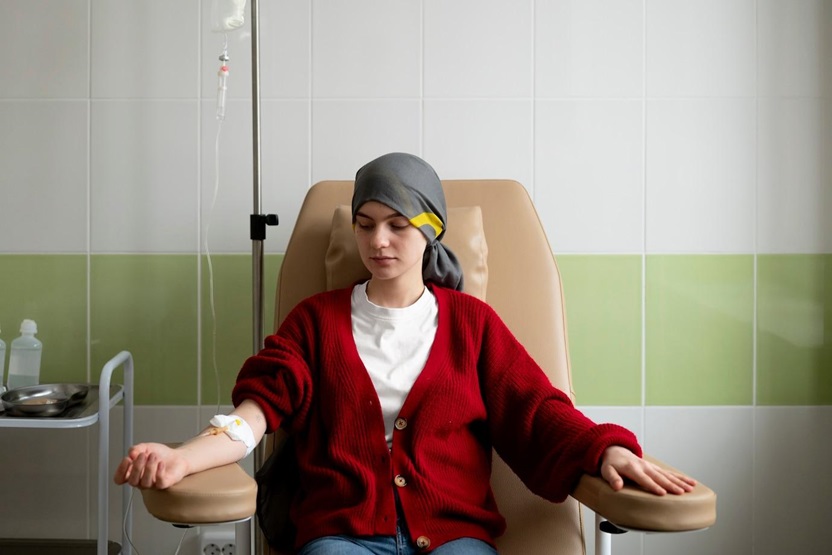
Advancements in cancer therapy have significantly transformed the landscape of cancer treatment, offering new hope and improved outcomes for patients facing this challenging disease. Understanding the intricacies of cancer therapy is crucial in appreciating the importance of monitoring its effectiveness. By delving into the various aspects of cancer therapy and the significance of monitoring, we can gain valuable insights into optimizing treatment strategies and enhancing patient care.
Understanding Cancer Therapy
Cancer therapy encompasses a range of treatment modalities designed to target and eliminate cancer cells within the body. These therapies can include surgery, chemotherapy, radiation therapy, immunotherapy, targeted therapy, and hormone therapy, among others. The goal of cancer therapy is to either cure the disease, control its progression, or alleviate symptoms to improve the patient’s quality of life.
The selection of an appropriate treatment approach depends on various factors, such as the type and stage of cancer, the patient’s overall health status, and the potential side effects of the therapy. Healthcare providers work closely with patients to develop personalized treatment plans tailored to their needs and goals. Monitoring the effectiveness of these treatment plans is essential to ensure they achieve the desired outcomes.
Monitoring cancer therapy involves assessing how well the treatment is working, whether the cancer is responding to the therapy, and whether any adjustments are needed to optimize the treatment’s effectiveness. By closely monitoring the patient’s progress throughout the treatment journey, healthcare providers can make informed decisions and modify the treatment plan as necessary.
Importance Of Monitoring Cancer Therapy Effectiveness
Monitoring the effectiveness of cancer therapy plays a critical role in determining the success of treatment and improving patient outcomes. It allows healthcare providers to track the tumor’s response to treatment, evaluate any changes in its size or characteristics, and assess the impact of the therapy on the patient’s overall well-being. Effective monitoring enables early detection of treatment resistance or disease progression, prompting timely interventions to address these challenges.
Furthermore, monitoring cancer therapy helps healthcare providers adjust treatment strategies based on individual patient responses, ensuring the therapy remains targeted and effective. By monitoring key indicators of treatment effectiveness, such as tumor shrinkage, changes in biomarker levels, and overall patient health, healthcare teams can optimize treatment plans to maximize the chances of successful outcomes.
In addition to improving treatment outcomes, monitoring cancer therapy effectiveness enhances patient safety by minimizing the risk of potential side effects or complications associated with the treatment. Regular monitoring allows healthcare providers to promptly identify and address adverse reactions, providing patients with comprehensive care and support throughout their treatment journey.
Methods For Monitoring Cancer Therapy Effectiveness
Methods for monitoring treatment efficacy encompass clinical assessments, imaging studies, laboratory tests, and patient-reported outcomes. Clinical assessments involve physical examinations and blood tests to evaluate overall health and track treatment side effects. Imaging studies, including CT scans, MRI scans, PET scans, and ultrasound, provide visual insights into tumor changes, guiding treatment decisions based on their findings. Laboratory tests analyze biomarkers to tailor treatment plans and monitor treatment response over time. Patient-reported outcomes offer subjective insights into symptoms and quality of life, aiding in personalized care and necessary treatment adjustments. These comprehensive monitoring methods ensure holistic care and optimize treatment outcomes for cancer therapy patients.
Common Challenges In Monitoring Cancer Therapy Effectiveness
Despite advancements, evaluating cancer therapy success faces challenges. Variability in patient responses due to tumor differences and genetic factors complicates outcome prediction. Cancer’s dynamic nature leads to evolving treatment responses, demanding continuous monitoring and adjustment. Interpreting monitoring data can be complex, requiring specialized knowledge. To ensure optimal patient care, overcoming these hurdles requires collaboration among healthcare providers, researchers, and industry partners.
Tools And Technologies For Monitoring Cancer Therapy Effectiveness
Technology advances have revolutionized cancer therapy monitoring, providing precise insights into treatment response. Imaging techniques like PET, MRI, and CT offer detailed tumor views, while biomarkers guide tailored therapy plans. Personalized cancer therapy, through genetic testing, optimizes treatment effectiveness. Collaboration among stakeholders accelerates innovation, enhancing patient care and shaping the future of oncology.
Role Of Imaging Techniques In Monitoring Cancer Therapy Effectiveness
Tellica Imaging utilizes advanced imaging techniques like PET, MRI, CT, and ultrasound to monitor the effectiveness of cancer therapies. PET scans detect metabolic activity, MRI provides high-resolution images of soft tissues, CT scans offer cross-sectional views, and ultrasound provides real-time imaging. These modalities play a crucial role in helping healthcare providers assess treatment responses, detect tumor changes, and make informed decisions about patient care, ensuring personalized approaches for optimal outcomes.
Biomarkers For Monitoring Cancer Therapy Effectiveness
Biomarkers, such as proteins and genetic mutations, provide critical insights into cancer diagnosis, prognosis, and treatment response. By monitoring these markers, healthcare providers can tailor treatment plans, predict outcomes, and detect treatment resistance early. Liquid biopsies and genetic testing offer noninvasive methods to assess treatment response and guide personalized treatment strategies, ultimately improving patient care and outcomes.
Personalized Cancer Therapy And Its Impact On Monitoring Effectiveness
Personalized cancer therapy tailors treatment plans to individual patients based on genetic and tumor characteristics, maximizing effectiveness while minimizing side effects. Analyzing tumor genetics enhances monitoring, tracks treatment response, and identifies potential resistance early on. Collaboration among healthcare providers, researchers, and industry partners is critical to advancing precision medicine initiatives and improving patient outcomes through tailored treatments.
Collaborative Efforts In Monitoring Cancer Therapy Effectiveness
Collaboration among healthcare providers, researchers, industry partners, and patients is essential for advancing cancer therapy monitoring. Multidisciplinary tumor boards facilitate comprehensive care planning, while research collaborations drive innovation in monitoring techniques. Partnerships with industry expand access to cutting-edge tools and technologies, and patient engagement ensures personalized care strategies. Together, these collaborative efforts optimize treatment outcomes and revolutionize cancer care delivery.
Conclusion
Monitoring cancer therapy effectiveness is vital for improving outcomes. Integrating clinical assessments, imaging, biomarkers, and patient-reported outcomes provides a comprehensive approach. Advancements in techniques and personalized therapy enhance monitoring strategies, guiding tailored interventions. Collaboration and patient-centered care are crucial to optimizing monitoring, improving treatment outcomes, and advancing cancer care.





